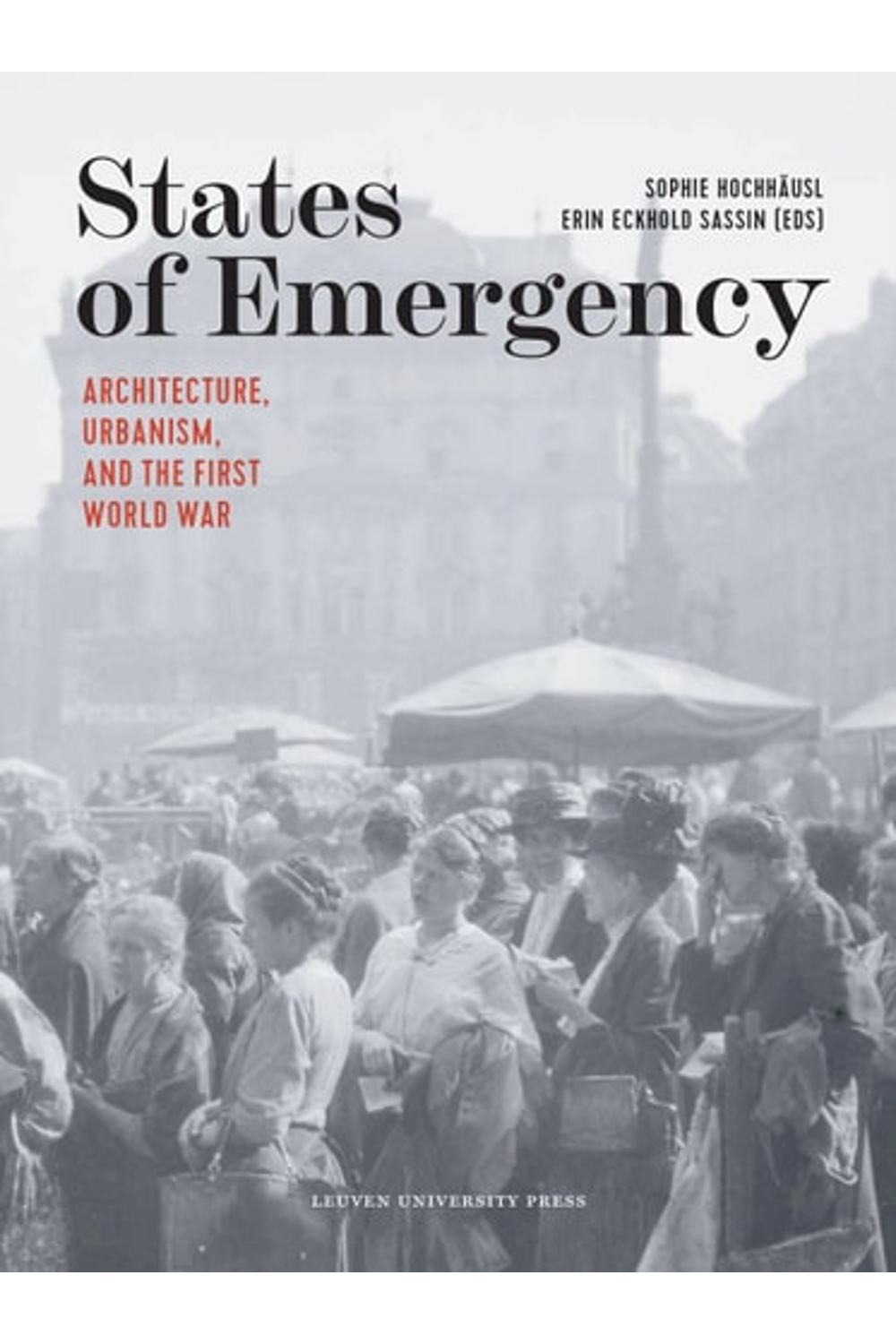Explore the hidden architectural and urban narratives of World War I in “States of Emergency,” edited by Hochhausl Eckhold Sassin. This 2022 Leuven University Press publication (ISBN: 9789462703087) transcends traditional military history, revealing how the Great War dramatically reshaped the built environment across continents. Discover essays analyzing refugee camps, repurposed military tech, and evolving urban landscapes. Twelve scholars (including Aubrey Knox and Deborah Ascher Barnstone) delve into the war’s enduring impact on architecture, daily life, and collective memory. This 336-page paperback offers a fresh perspective on a pivotal era, ideal for history buffs, architecture enthusiasts, and those seeking a deeper understanding of war’s spatial legacy. Weight: 810g.
States of Emergency: Architecture, Urbanism, and the First World War
18,88 $
In stock
More than one hundred years after the conclusion of the First World War, the edited collection States of Emergency: Architecture, Urbanism, and the First World War reassesses what that cataclysmic global conflict meant for architecture and urbanism from a human, social, economic, and cultural perspective. Chapters probe how underdevelopment and economic collapse manifested spatially, how military technologies were repurposed by civilians, and how cultures of education, care, and memory emerged from battle. The collection places an emphasis on the various states of emergency as experienced by combatants and civilians across five continentsfrom refugee camps to military installations, villages to capital citiesthus uncovering the role architecture played in mitigating and exacerbating the everyday tragedy of war.
Contributors: Aubrey Knox (The Graduate Center of The City University of New York), Deborah Ascher Barnstone (University of Technology Sydney), Emma Thomas (Boston University), Da Hyung Jeong (Institute of Fine Arts, New York University), Julie Willis (The University of Melbourne), Katti Williams (The University of Melbourne), David Caralt (Universidad San Sebastin, Concepcin, Chile), Etien Santiago (Indiana University Bloomington), Theodossis Issaias (Carnegie Museum of Art, Pittsburgh), Min Kyung Lee (Bryn Mawr College), Massimiliano Savorra (Universit degli studi di Pavia), Antje Senarclens de Grancy (Graz University of Technology)
| Authors | |
|---|---|
| Binding | |
| Condition | |
| ISBN-10 | 9462703086 |
| ISBN-13 | 9789462703087 |
| Language | |
| Pages | 336 |
| Publisher | |
| Year published | |
| Weight | 810 |
Related products
De Coeur inconnu
13,14 $The Merchant of Venice (Graffex)
16,83 $
- Additional information
- Currencies
- USD – United States dollar
- EUR – Euro
- GBP – Pound sterling
- CNY – Chinese yuan
- BRL – Brazilian real
- MXN – Mexican peso
- JPY – Japanese yen
- PHP – Philippine peso
- THB – Thai baht
- PLN – Polish złoty
- CAD – Canadian dollar
- MYR – Malaysian ringgit
- AUD – Australian dollar
- TWD – New Taiwan dollar
- CZK – Czech koruna
- SEK – Swedish krona
- HUF – Hungarian forint
- ILS – Israeli new shekel
- CHF – Swiss franc
- HKD – Hong Kong dollar
- DKK – Danish krone
- SGD – Singapore dollar
- NOK – Norwegian krone
- NZD – New Zealand dollar





